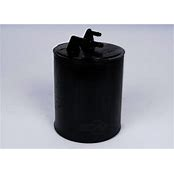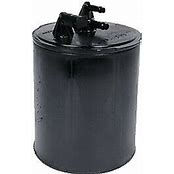SirRobyn0
Full Access Member
- Joined
- Dec 6, 2019
- Posts
- 6,908
- Reaction score
- 11,891
- Location
- In the woods in Western Washington
- First Name
- .
- Truck Year
- 1984
- Truck Model
- C20
- Engine Size
- 305
Posts 1, 2, 3, 4 & 6 are my general information posts, they are all geared towards carbureted rigs, the principles are the same for fuel injected rigs, but the controls will be different.
So yesterday I installed a new Charcoal Canister and did a post in another thread and went on a bit. After I got though with the post I realized I should make a new thread. A couple purposes to that. One would be just to get information out there. It seems like when you look up things like how to set up a charcoal canister on a vehicle that does not have to stock carb it just seems like there is hardly any information out there, but it's really quite simple. Also it can be thread where we just ask general evap questions and hopefully someone will know the answer. And like with the wiper and linkage rebuild threads it can be somewhere we can refer folks to in the future.
I'm going to start with the stock setup and this will be for the 5 or 6 port canisters first found on California emissions trucks, but somewhere in the early 80's they found their way into federal emissions trucks as well. If your truck has two canisters do fret I'll get to that in the end.
So the canister I'm talking about is in the below picture:
You'll notice 5 visible hoses connections. Lets go over what each one of those connections is for.
Starting with the port closest to the bottom of the picture, and on the bottom of the double stack of connections. That connects to a two port PCV valve and is 1/4" line, this is the purge line. So when the canister is commanded to purge, the vapor stored in the charcoal canister is drawn though that line and into the engine where it is burned off as part of the mixture.
Next the line on top of that is labeled control and is 3/16", when vacuum is applied to that connection the canister purges. I'll elaborate on how to set that up for an aftermarket carb, or on a rig that has had all the factory vacuum controls removed, but if you system is intact and functional you'll want to connect that where it came from. Most commonly it'll be a thermostatic vacuum switch on the intake manifold, or something that branches off of it. I'm sorry I can't be more specific on the factory set up for this line but there were a few different ways it was done.
One the middle set of connections on the canister, the one closest to the canister is a 3/8" connection and that is the bowl vent for the carburetor. If your running an aftermarket carburetor it may not have a bowl vent, in that case it is perfectly fine to plug that port and you can see I have done that on mine.
The 3/16" connection above that is manifold vacuum, it can be connected to any manifold vacuum source, either actually on the manifold or on the carburetor it just needs to have vacuum at idle and light throttle.
Next connection up is for the vapor line off the fuel tank. I don't think I need to say anymore but if someone needs me to elaborate let me know.
And then the black knob like looking thing at the top is simply a vent. If your air cleaner housing has a 3/8" connection on the driver side of the housing then you'll want to pop that black knob off. Under that is a 3/8" nipple and you just connect the two together with 3/8" hose.
A couple pictures of the canister installed with general vacuum hose routing.
So far most of that I posted in the other thread so for those of you that saw that your probably wondering what the point is here, well hang on I'm about to get into that in the next post.
So yesterday I installed a new Charcoal Canister and did a post in another thread and went on a bit. After I got though with the post I realized I should make a new thread. A couple purposes to that. One would be just to get information out there. It seems like when you look up things like how to set up a charcoal canister on a vehicle that does not have to stock carb it just seems like there is hardly any information out there, but it's really quite simple. Also it can be thread where we just ask general evap questions and hopefully someone will know the answer. And like with the wiper and linkage rebuild threads it can be somewhere we can refer folks to in the future.
I'm going to start with the stock setup and this will be for the 5 or 6 port canisters first found on California emissions trucks, but somewhere in the early 80's they found their way into federal emissions trucks as well. If your truck has two canisters do fret I'll get to that in the end.
So the canister I'm talking about is in the below picture:
You must be registered for see images attach
You'll notice 5 visible hoses connections. Lets go over what each one of those connections is for.
Starting with the port closest to the bottom of the picture, and on the bottom of the double stack of connections. That connects to a two port PCV valve and is 1/4" line, this is the purge line. So when the canister is commanded to purge, the vapor stored in the charcoal canister is drawn though that line and into the engine where it is burned off as part of the mixture.
Next the line on top of that is labeled control and is 3/16", when vacuum is applied to that connection the canister purges. I'll elaborate on how to set that up for an aftermarket carb, or on a rig that has had all the factory vacuum controls removed, but if you system is intact and functional you'll want to connect that where it came from. Most commonly it'll be a thermostatic vacuum switch on the intake manifold, or something that branches off of it. I'm sorry I can't be more specific on the factory set up for this line but there were a few different ways it was done.
One the middle set of connections on the canister, the one closest to the canister is a 3/8" connection and that is the bowl vent for the carburetor. If your running an aftermarket carburetor it may not have a bowl vent, in that case it is perfectly fine to plug that port and you can see I have done that on mine.
The 3/16" connection above that is manifold vacuum, it can be connected to any manifold vacuum source, either actually on the manifold or on the carburetor it just needs to have vacuum at idle and light throttle.
Next connection up is for the vapor line off the fuel tank. I don't think I need to say anymore but if someone needs me to elaborate let me know.
And then the black knob like looking thing at the top is simply a vent. If your air cleaner housing has a 3/8" connection on the driver side of the housing then you'll want to pop that black knob off. Under that is a 3/8" nipple and you just connect the two together with 3/8" hose.
A couple pictures of the canister installed with general vacuum hose routing.
You must be registered for see images attach
You must be registered for see images attach
You must be registered for see images attach
So far most of that I posted in the other thread so for those of you that saw that your probably wondering what the point is here, well hang on I'm about to get into that in the next post.
Last edited:




